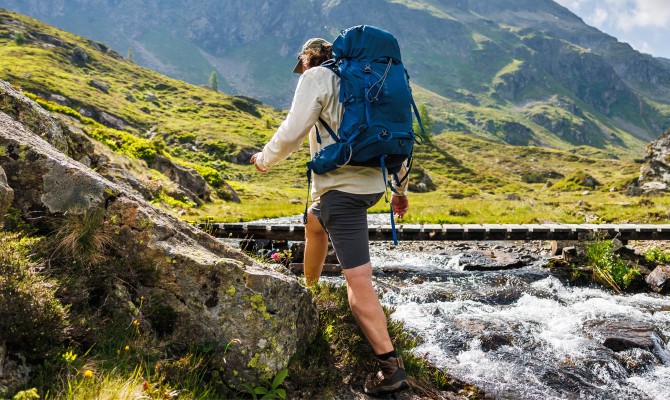Spotting the Signs Before Injury Strikes
13 Oct 2025

Don’t push through the pain that could cut your trip short
Every tramper knows that a bit of stiffness comes with the territory. Long climbs, heavy packs, and uneven terrain test your body as much as your endurance. But while some aches fade after a good night’s rest, others are early warning signs of injury, the kind that can cut your trip short or make the journey home miserable.
Knowing when a niggle is harmless and when it’s not can keep you safe, comfortable, and ready for more adventures.
Common warning signs trampers ignore
- Persistent knee ache It’s normal for your legs to feel tired after a steep descent, but pain that keeps coming back, especially around the kneecap or inside of the knee isn’t just “mountain legs.” It could point to patellofemoral pain (pain behind the kneecap) or early joint irritation. If your knees complain every downhill, it’s time to pay attention.
- Foot pain that lingers Blisters are one thing, but soreness in the arch, heel, or toes that hangs around after your trip can be a red flag. Plantar fasciitis, stress reactions, or tendon issues often start as mild foot pain that trampers shrug off. Left unchecked, they can turn every step into a wince.
- Back tightness under the pack Carrying 10–15kg over uneven ground is tough work. A bit of stiffness is normal, but constant tightness or sharp twinges in the lower back may signal weak hips or core, or an irritated lumbar spine. If you’re always adjusting your straps to “take the load off,” your back could be telling you it needs support.
- A limp you can’t shake One of the clearest warning signs is changing how you walk, favouring one leg, leaning heavily on poles, or shortening your stride. If your body is finding workarounds, it usually means something deeper is brewing.
- Pain that interrupts the fun A niggle isn’t “just part of tramping” if it stops you from keeping up with the group, enjoying the scenery, or pushing on to the next hut. When discomfort steals the joy, it’s a sign to get it sorted.
When can you self manage?
Some discomfort is normal after big days in the hills. You can usually self-manage if:
- Pain settles within a couple of days.
- You can walk normally without limping or favouring one side.
- Gentle stretching, mobility drills, or over-the-counter pain relief improve things.
- You can still carry a pack comfortably on your next outing.
Think of this as your body saying, “That was tough, but I’ve got this.”
When is it time to see a physio?
Don’t ignore it if:
- Pain keeps coming back every tramp, or lasts more than a 72 hours.
- You notice swelling, bruising, or sharp pain with certain movements.
- You’re adjusting your stride, leaning on poles more, or avoiding tracks you’d normally tackle.
- Discomfort is stopping you from training, walking, keeping up with you group or carrying a pack with confidence.
That’s when it’s worth getting checked. A physio can identify the cause, guide your recovery, and give you strategies to strengthen weak areas, so small issues don’t become big setbacks.
Stay on track, trip after trip
Tramping should be about the views, the camaraderie, and the challenge, not nagging pain. By recognising early warning signs and getting the right help when you need it, you can keep your adventures going for longer.
At Habit Health, our physios work with trampers to address common overuse injuries, improve strength, and keep you moving well under load. From knee niggles to back tightness, we’ll help you prepare for your next trip and enjoy every kilometre of the track.
Book an appointment today and don’t let a preventable injury stop your next adventure.